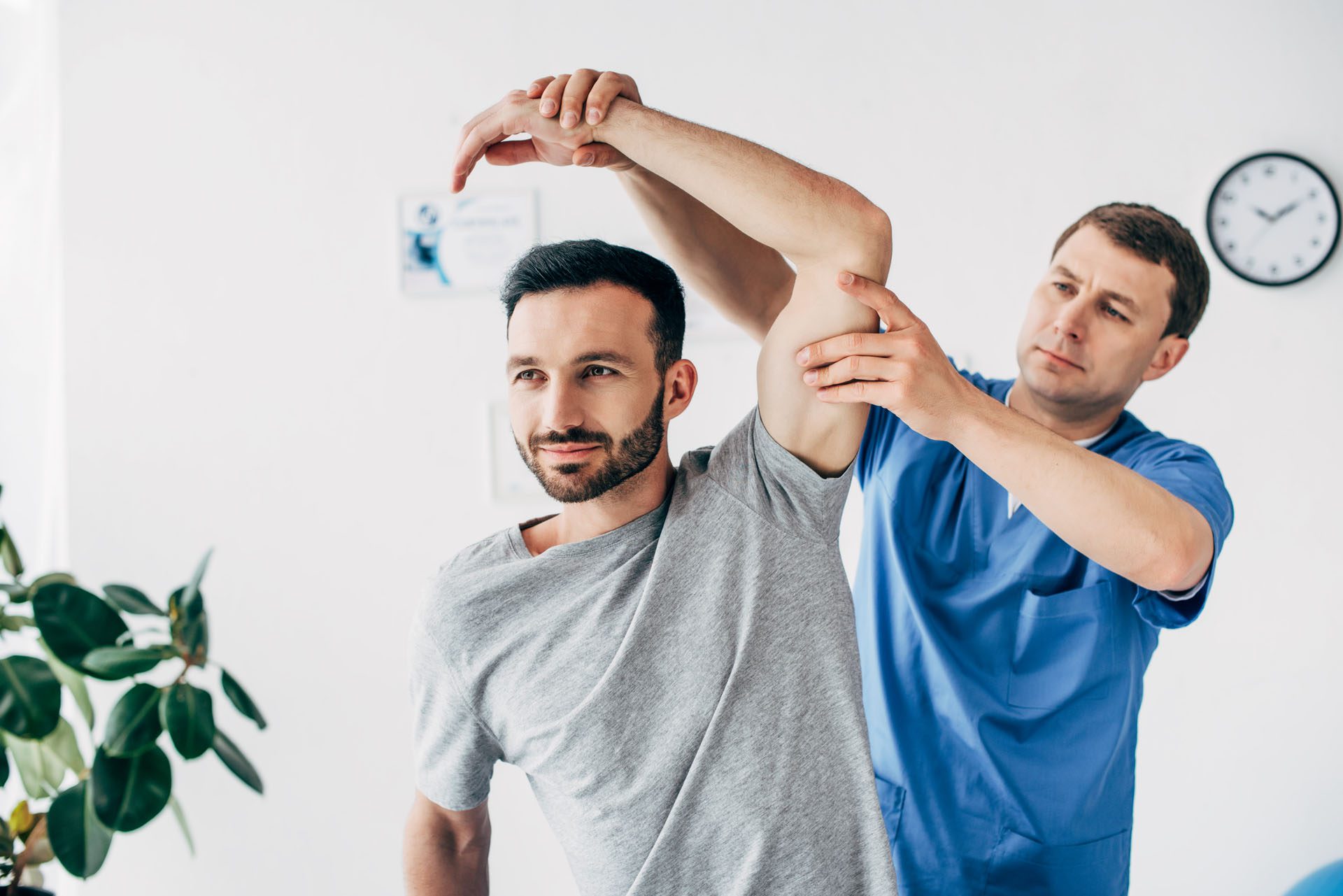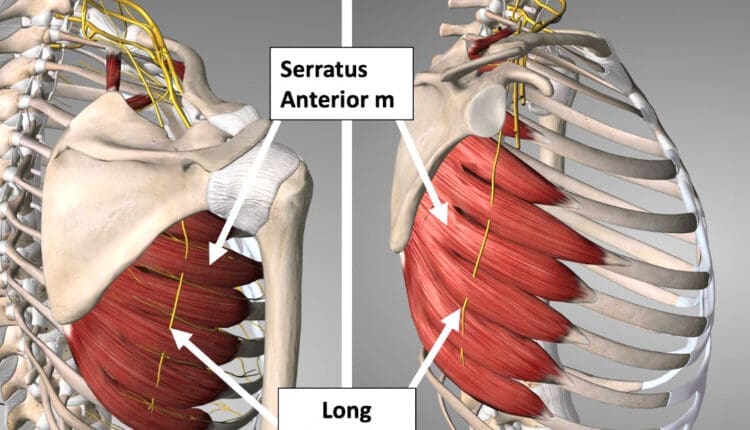Left Side Lower Back Pain: Effective Relief Techniques
Should individuals experiencing lower left back pain see a healthcare provider if it lasts more than a few weeks?

Left Side Lower Back Pain
Lower left back pain can impact your ability to go about your day. If left-side lower back pain lasts longer than a week, it is considered chronic back pain, which can severely impact one’s quality of life. This type of pain has various causes. Muscle or spine and nerve damage, including sciatica, can cause pain. Organs in the lower back, including the kidneys, can cause pain. Pregnancy-related changes, fibromyalgia, and other conditions can cause lower left-side back pain in females.
Causes
Back pain is common and affects almost everyone. (National Institute of Arthritis and Musculoskeletal and Skin Diseases, 2023) Lower left back pain can have many causes, ranging from muscle and spine issues to organ infections. One way to help tell what’s causing the symptoms is to determine whether there is also sciatica, sharp or burning pain that radiates down one side of the body. It happens when the sciatic nerve gets compressed or irritated. Possible causes include (Penn Medicine, 2020)
Muscle Injury
- A muscle injury from an accident or injury can be a cause that can appear with or without sciatica.
- If this is the cause, you’ll notice that the pain improves with rest but worsens after you’ve sat for a long time or after getting up from sleep.
- There may also be a limited range of motion, tenderness, or swelling.
Arthritis or Bone Conditions
- Arthritis and bone issues, like osteoporosis, can also be a cause.
- This can happen if the arthritis is in the left hip or the root cause is on the right side, but the body compensates by overusing muscles on the left side of the back.
Unhealthy Posture and Body Positioning
- Unhealthy postures and body positioning can contribute to back pain and musculoskeletal problems.
- To avoid straining the muscles, try sitting and standing straight and keeping all the joints at a 90-degree angle.
- Move around every 20-30 minutes and stretch out.
Kidneys
- The kidneys are located in the middle back.
- Kidney infections or kidney stones could cause pain on the left side.
- Other symptoms include pain when urinating, fever, and nausea.
Ulcerative Colitis
- Ulcerative colitis, inflammation of the large intestine, can also cause lower left back pain in some cases.
- If this is the cause, there may also be abdominal pain, cramping, nausea, and fatigue.
Uterine-Related Pain
- Several conditions related to the uterus can cause back pain symptoms, including PMS, period cramps, endometriosis, and more.
- Sometimes, these conditions cause pain on both sides, but some individuals may experience pain just on the left side.
Pregnancy
- The weight gain, hormonal changes, and limited movement can also contribute to lower left back pain. (Cedars Sinai, 2024)
Spinal Disease
- If one of the discs or vertebrae in the spine slips out of place or becomes damaged, this can cause upper, middle, or lower back pain.
- A healthcare provider will order imaging studies to determine what’s causing the pain symptoms. (National Institute of Arthritis and Musculoskeletal and Skin Diseases, 2023)
Sciatica
Some causes can also cause sciatica.
In many cases, over-the-counter anti-inflammatory medications can help with sciatica. If it persists, it is recommended to see your healthcare provider to find the root cause. The causes include: (Aguilar-Shea, A. L. et al., 2022)
Herniated disc
- A disc that pops out of place can add pressure to the sciatic nerve.
Spinal Stenosis
- Spinal stenosis, or spine narrowing, can also cause sciatic symptoms.
Spondylolisthesis
- Occurs when vertebrae are out of alignment, leading to sciatic symptoms.
Pregnancy
- Pregnancy-related growth and bodily changes oftentimes lead to sciatic nerve symptoms and sensations.
Muscle Spasms
- Spasms like piriformis syndrome, a spasm of the muscle in the buttocks, can cause back pain.
Surgery
- It’s normal to have back pain for up to six weeks after a back procedure.
- However, if there is new or worsening lower left back pain after surgery, consult the healthcare provider. (Penn Medicine, 2017)
Describing Symptoms
Knowing how to describe your symptoms when seeing a healthcare provider is helpful. Answering these questions can help explain symptoms (National Institute of Arthritis and Musculoskeletal and Skin Diseases, 2023)
- Have you had any accidents or injuries?
- Did the pain come on suddenly or gradually?
- Are you experiencing any limits to your range of motion?
- Do you have any numbness or tingling?
- What helps with the pain?
- What makes the pain worse?
- Do you have other symptoms, like a fever or trouble urinating?
Self Care
- Self-care includes rest, ice, heat, and over-the-counter anti-inflammatory medications.
- Non-steroidal anti-inflammatory drugs can help with pain.
- Sleeping on a firm mattress and maintaining a healthy posture can help manage and improve symptoms. (See Q. Y., Tan J. B., & Kumar D. S. 2021)
Prescribed Treatment
- Your healthcare provider may recommend massage, chiropractic care, and acupuncture treatments.
- If pain can’t be managed at home, your healthcare provider may suggest prescription medications, including muscle relaxers.
- These can allow the tissue to heal and reduce your pain as well.
- If you have severe sciatica or vertebrae that have slipped out of place, the healthcare team might recommend a steroid injection into the lower left back to reduce pain by reducing inflammation.
- In addition to prescription treatments, your healthcare provider might recommend physical therapy to retrain movements, build strength, and help prevent back pain.
Moving Around
It’s important not to move too much. Rest is important for healing, although don’t stop moving entirely. These tips can also help (National Institute of Arthritis and Musculoskeletal and Skin Diseases, 2023)
- Sleep on a firm mattress that will support your back.
- Get a comfortable, ergonomic chair for your job.
- If you work on your feet, learn to practice healthy posture and use shoes and insoles to facilitate and maintain correct posture.
- Once you’ve healed, building your core strength may help avoid lower back pain in the future.
Injury Medical Chiropractic and Functional Medicine Clinic
Talk with a healthcare provider and request a referral to a specialist who can help with long-term management. Injury Medical Chiropractic and Functional Medicine Clinic works with primary healthcare providers and specialists to build optimal health and wellness solutions. We focus on what works for you to relieve pain, restore function, prevent injury, and mitigate issues through adjustments that help the body realign itself. The clinic can also work with other medical professionals to integrate a treatment plan to resolve musculoskeletal problems.
Lower Back Pain Chiropractor Treatment
References
National Institute of Arthritis and Musculoskeletal and Skin Diseases. (2023). Back pain. Retrieved from https://www.niams.nih.gov/health-topics/back-pain
Penn Medicine, B. T., MD. (2020). 4 reasons you may have back pain on only one side. Penn Medicine. https://www.pennmedicine.org/updates/blogs/musculoskeletal-and-rheumatology/2017/november/back-pain-on-one-side
Cedars Sinai. (2024). Back pain during pregnancy. https://www.cedars-sinai.org/health-library/diseases-and-conditions/b/back-pain-during-pregnancy.html
Aguilar-Shea, A. L., Gallardo-Mayo, C., Sanz-González, R., & Paredes, I. (2022). Sciatica. Management for family physicians. Journal of family medicine and primary care, 11(8), 4174–4179. https://doi.org/10.4103/jfmpc.jfmpc_1061_21
Penn Medicine, V. G., MD. (2017). Back pain that won’t go away—even with surgery. Penn Medicine. https://www.pennmedicine.org/updates/blogs/musculoskeletal-and-rheumatology/2017/november/back-pain-that-wont-go-away
See, Q. Y., Tan, J. B., & Kumar, D. S. (2021). Acute low back pain: diagnosis and management. Singapore Medical Journal, 62(6), 271–275. https://doi.org/10.11622/smedj.2021086



